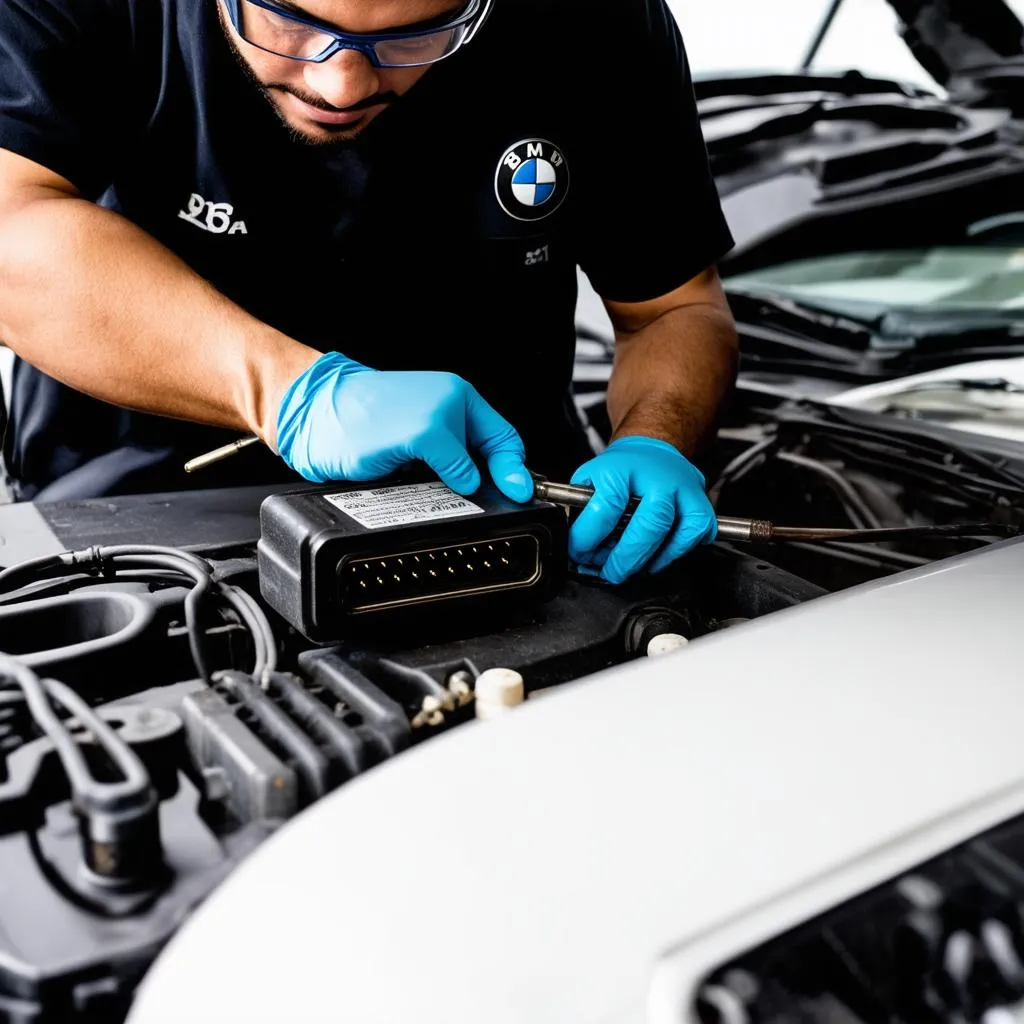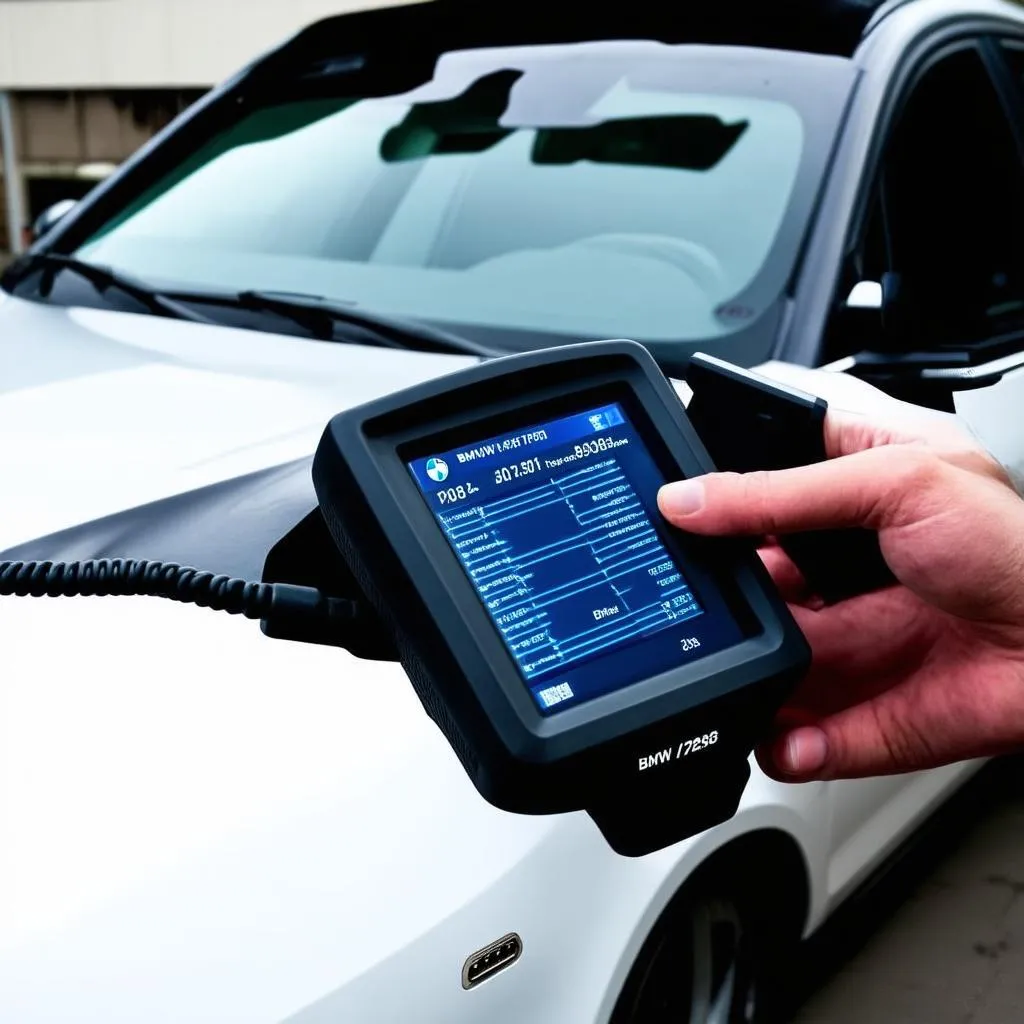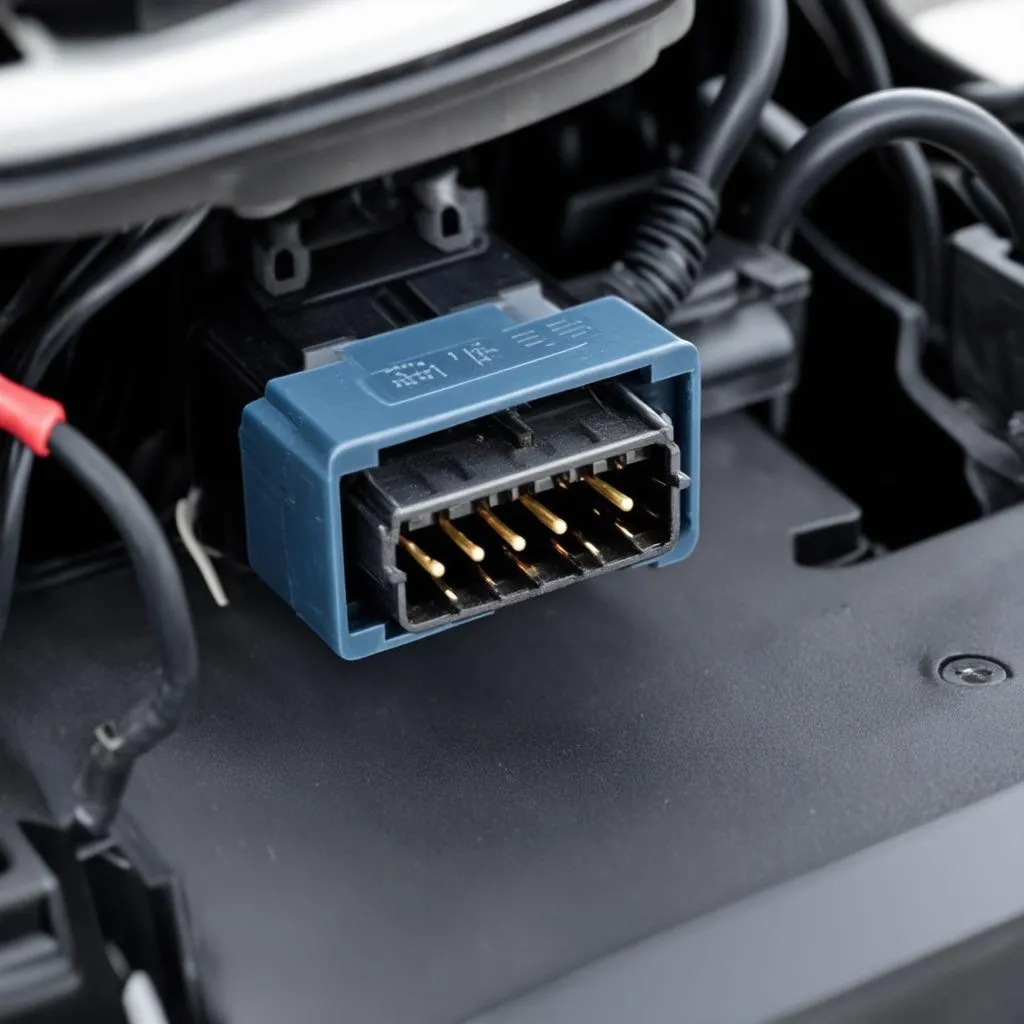Have you ever found yourself stranded on the side of the road, with a flashing engine light and a nagging feeling that something’s not quite right with your BMW? Chances are, your car is trying to communicate with you, and the key to understanding its message lies in the OBD port. But what happens when this crucial connection point starts to fail?
This guide explores the world of BMW OBD ports, delving into the reasons why they might need replacement, the tell-tale signs that your OBD port is on its way out, and the best ways to approach this repair. Let’s dive in!
The Significance of the BMW OBD Port: A Gateway to Understanding
The OBD (On-Board Diagnostics) port, often referred to as the diagnostic connector, is the vital link between your BMW and a diagnostic scanner. It’s the gateway to a wealth of information about your vehicle’s health, allowing mechanics and even savvy car owners to access real-time data about the engine, transmission, and other critical systems.
Think of it like a doctor’s stethoscope for your car – it allows you to listen in on the inner workings and identify any potential issues before they escalate into major problems.
Why Your BMW OBD Port Might Need Replacement
Several factors can contribute to the need for an OBD port replacement. Here’s a breakdown of common culprits:
1. Wear and Tear
Like any mechanical component, OBD ports can experience wear and tear over time. Frequent use, exposure to the elements, and the constant jostling of the road can take their toll on the connector’s pins and circuitry.
2. Corrosion
Moisture and salt, especially in coastal areas or during winter months, can lead to corrosion on the OBD port’s pins. This corrosion can hinder electrical conductivity, causing intermittent or complete connection failures.
3. Physical Damage
Accidents, improper handling of diagnostic tools, or even rough driving can cause physical damage to the OBD port. Bent pins, broken connectors, or cracked housings can disrupt the connection and require replacement.
Identifying the Signs of a Failing BMW OBD Port
Recognizing the early warning signs of an OBD port issue can save you time, stress, and potential repair costs. Here are some key indicators:
1. Intermittent Connection:
- The diagnostic scanner sometimes connects, but other times it fails to establish a connection.
- You might see an error message on the scanner that indicates a communication fault.
2. Erratic Electrical Issues:
- The engine light flickers or comes on unexpectedly.
- Other electronic systems, such as the radio or climate control, experience intermittent malfunctions.
3. Diagnostic Tool Compatibility Issues:
- Some diagnostic tools may work, while others fail to connect.
4. Visible Damage:
- Inspect the OBD port for signs of corrosion, bent pins, or cracks.
Bmw Obd Port Replacement: A Step-by-Step Guide
Important Note: If you’re not comfortable performing electrical repairs, it’s always best to consult a qualified mechanic.
Here’s a general guide to replacing an OBD port on your BMW:
- Gather the necessary tools: You’ll need a set of Torx screwdrivers, a wiring diagram for your specific BMW model, a new OBD port, and a soldering iron (if needed).
- Disconnect the battery: Safety first! Always disconnect the negative battery terminal before starting any electrical work.
- Locate the OBD port: It’s typically found under the dashboard on the driver’s side, near the steering column.
- Remove the old port: Carefully remove any screws or clips holding the OBD port in place. Then, disconnect the wiring harness.
- Install the new port: Align the new port with the existing mounting points and secure it with the screws or clips.
- Reconnect the wiring harness: Ensure that each wire is connected correctly to the corresponding pin on the new port. Refer to the wiring diagram if necessary.
- Reconnect the battery: Once all connections are secure, reconnect the battery terminal.
- Test the connection: Connect your diagnostic scanner to the new OBD port and test the connection.
Troubleshooting Tips:
- If the OBD port replacement doesn’t resolve the issue, there might be a fault in the wiring harness or a deeper problem with your car’s electrical system. It’s essential to consult a professional mechanic for further diagnosis.
- When buying a replacement OBD port, ensure it’s compatible with your specific BMW model.
FAQ (Frequently Asked Questions)
1. Is it difficult to replace a BMW OBD port?
It can range from straightforward to complex depending on the car model and your experience. If you’re not confident with electrical work, it’s best to consult a professional.
2. How much does it typically cost to replace an OBD port on a BMW?
The cost can vary depending on labor charges, the specific part, and location. However, you can expect to pay between $100 and $300 for a typical OBD port replacement.
3. Will replacing the OBD port affect my BMW’s warranty?
If you have a valid warranty, it’s best to consult your dealership or a certified BMW repair shop to avoid potential warranty issues.
4. Are there any DIY OBD port replacement kits available?
Yes, some kits are available online, but they might not always be suitable for all BMW models. Ensure you choose a compatible kit and follow instructions carefully.
5. Can I use a generic OBD port instead of a BMW-specific one?
While generic ports might seem like a cheaper option, they might not be compatible with all BMWs. It’s best to use a BMW-specific port for optimal functionality and compatibility.
6. Is it safe to use a generic OBD scanner on a BMW?
Yes, you can use a generic OBD scanner on a BMW, but it’s crucial to choose a reputable scanner that supports BMW vehicles and has accurate data for your specific model year.
7. Can a faulty OBD port affect other systems in my BMW?
While rare, a faulty OBD port can potentially affect other electrical systems, but it’s more likely to be an underlying issue. If you notice strange electrical problems, consult a mechanic for proper diagnosis.
8. What’s the best way to prevent an OBD port from failing?
Regular cleaning and inspections are key to preventing OBD port issues. You can clean the connector’s pins with a contact cleaner, avoiding any harsh chemicals.
9. What’s the spiritual significance of a BMW OBD port?
From a spiritual perspective, the OBD port represents the connection between the physical and spiritual realms of your vehicle. It’s the bridge through which you can understand and communicate with the energy that flows through your BMW.
10. Are there any Feng Shui principles that apply to BMW OBD ports?
Feng Shui principles emphasize harmony and balance. A well-maintained OBD port, allowing seamless communication and smooth operation, aligns with these principles, promoting a sense of well-being and positive energy flow within your vehicle.
Related Articles:
- Generic OBD-2 DTCs
- 1996 BMW Z3 OBD Port
- Fuse DOR OBD S10
- BMW OBD-II Readiness Drive Cycle
- Mass OBD Not Ready Oxygen Sensor
Contact Us:
If you’re struggling with an OBD port issue on your BMW, we’re here to help! Contact us through WhatsApp at +84767531508 for expert support 24/7. Our team of experienced technicians can guide you through the troubleshooting process and provide assistance with any OBD port related concerns.
 OBD Port Repair
OBD Port Repair
 BMW OBD Scanner
BMW OBD Scanner
 BMW OBD Port Diagram
BMW OBD Port Diagram
Final Thoughts:
Don’t let a faulty OBD port hold you back from enjoying your BMW’s performance. By understanding the signs, taking proactive measures, and seeking expert assistance when needed, you can keep your vehicle connected and running smoothly.
Remember, the OBD port is more than just a connector; it’s a gateway to understanding and maintaining the well-being of your BMW.
We encourage you to share your experiences with BMW OBD ports in the comments section below!